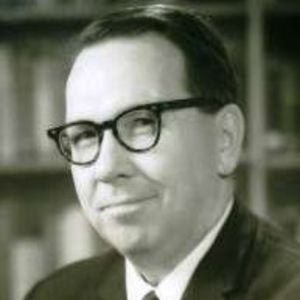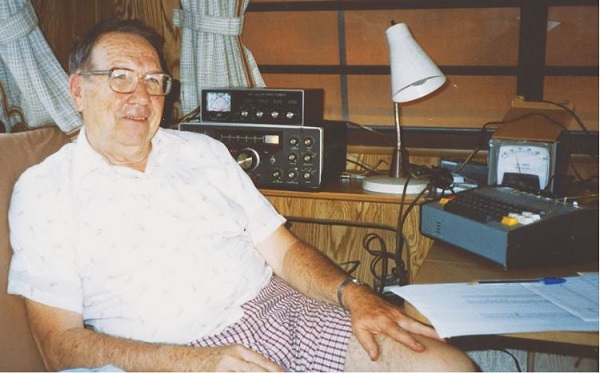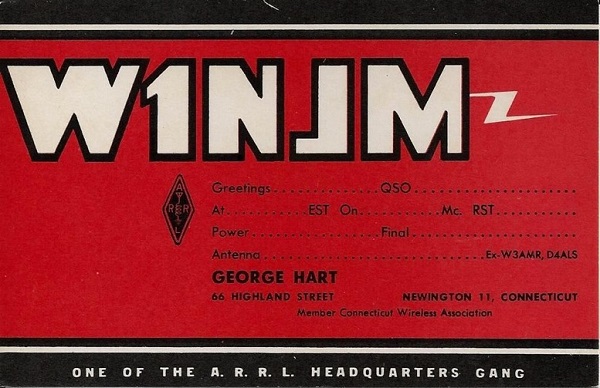|
George Hart Hartford, CT QCWA # 5103 Chapter 149 |
 |
Ed, N4KB #2416 - brother
George Hart, W1NJM -- the chief developer of the National Traffic System (NTS) -- passed away Sunday, March 24. He was 99. An ARRL Charter Life Member, Hart spent more than four decades as a member of the ARRL Headquarters staff and continued to be an active amateur and regular participant in Field Day. In 1984, the ARRL Board of Directors named Hart as an ARRL Honorary Vice President.
First licensed in 1929 as W3AMR in Pennsylvania, Hart began his ARRL career in August 1938 as a second operator at the W1AW Maxim Memorial Station, which was new at the time. He took over as Acting Communications Manager in 1942 when then-Acting Communications Manager John Huntoon, W1LVQ, left the ARRL for active duty in the Coast Guard during World War II. Beginning with the December 1942 issue, Hart contributed almost 1000 articles to QST, with topics ranging from public service to simulated emergency tests to traffic handling pointers; he also penned the monthly columns "Operating News" and "Amateur Radio Public Service". Hart served in the US Army Air Force from 1944-1946, returning to his job as a Communications Assistant at ARRL Headquarters under Ed Handy, W1BDI, after the war. During his tenure at the League, Hart served as Communications Assistant, National Emergency Coordinator and ultimately as Communications Manager from 1967 until his retirement in 1978.
George Hart exemplified the finest of the 'old school' radio amateurs for whom operating skill and public service were paramount. said ARRL Chief Executive Officer David Sumner, K1ZZ. "For many years -- as a private endeavor from his own station -- he offered high-speed Morse code practice at up to 65 words per minute. George set and met high standards in everything he did, inspiring generations of radio amateurs to do the same".
Hart first announced the National Traffic System in the September 1949 issue of QST. In his article "New National Traffic Plan: ARRL Maps New Traffic Organization for All Amateurs", he outlined the new national system [Editor's note: You must be an ARRL member and logged in to the ARRL website to access this article.]:
During 1948, practically every section in the ARRL field organization had a net of some kind going, and 47 sections had nets devoted exclusively to traffic handling. If, in each section net, a certain station (or stations) was designated to take all traffic going outside the section, this station then to report to a later net having greater coverage, and the same procedure repeated funneling into still greater coverage areas, we would have a traffic organization of national scope capable of handling traffic to (and from) any point in the entire field organization, which includes the entire United States, most of its Possessions and most of Canada.
This in briefest outline, is the essence of the ARRL National Traffic Plan. It takes the already-existing section net as a unit and makes two larger unit categories which are called 'regional' and 'area' nets. Each regional net covers a certain number of section nets (normally those within a certain call area), and each area net covers a certain number of regional nets (normally those within a time zone). The area nets, of which there are four (one for each time zone), pass traffic around among themselves, and it then comes back down through regional and section nets again in the same evening. This requires organization and teamwork of no small dimensions, but it will work if we get together on it and push.
In 2009, the ARRL Board of Directors created the George Hart Distinguished Service Award. This annual award is conferred upon an ARRL member whose service to the League's Field Organization is of the most exemplary nature. Selection criteria include the nominee's operating record with the National Traffic System, participation within the Amateur Radio Emergency Service® (ARES®) or station appointments and/or leadership positions held within the ARRL Field Organization.
Ellen White, W1YL, remembered Hart fondly: "George was my 'boss' for a number of years in the ARRL's Communication Department. His devotion to the National Traffic System and all forms of emergency communication were legendary, as well as was his even-handed management of all operating phases. I will miss Geo, and that's no joking matter."
Hart was a member of the ARRL A-1 Operator Club, the Quarter Century Wireless Association and the Newington Amateur Radio League, which he helped create in 1946 and for which he served as its first president. He was inducted into the CQ Hall of Fame in 2010 for his contributions to the NTS.
A memorial service is being planned for April.

